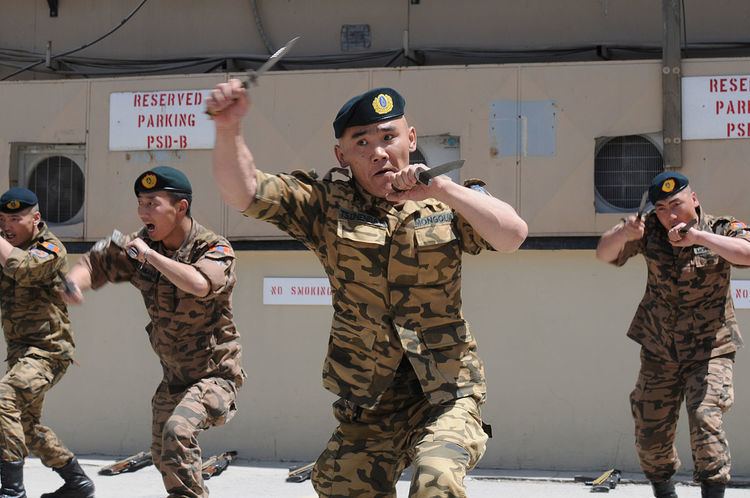 | ||
Dual wielding is using two weapons, one in each hand, during combat. It is not a common combat practice. Although historical records of dual wielding in war are limited, there are numerous weapon-based martial arts that involve the use of a pair of weapons. The use of a companion weapon is sometimes employed in European martial arts and fencing, such as a parrying dagger. Miyamoto Musashi, a Japanese swordsman and ronin, was said to have conceived of the idea of a particular style of swordsmanship involving the use of two swords.
Contents
In terms of firearms and handguns, this style has been popularized by television, but is generally denounced by firearm enthusiasts due to its impracticality. Though using two hand guns at a time confers an advantage by allowing more ready ammunition, it is rarely done due to other aspects of weapons handling. Dual wielding is present in many films and video games, which have the freedom of ignoring the impracticality of the style. The term itself is often invoked in the context of games.
History
Dual wielding has not been used or mentioned much in military history, though it appears in weapon based martial arts and fencing practices. This style of combat requires special training, since an untrained user is unable to swing both weapons at the same time. To perform an attack by the defensive weapon after the first, the user needs to perform a separate and distinct action. The main advantage of using two weapons is the user can use one as a holding weapon after contact is made and use the other to attack the open area of the opponent. Otherwise, there is not much advantage compared to a user who wields a single weapon with both hands in terms of power and control. The latter has more maneuverability due to a more controlled center of gravity; a person using a single weapon can use their legs for kicking or tripping. A single-handed grip on each weapon also means it can be knocked away with a sufficiently powerful blow.
The use of weapon combinations in each hand has been mentioned for close combat in western Europe during the Byzantine, Medieval, and Renaissance era. The use of a parrying dagger such as a main gauche along with a rapier is common in historical European martial arts. Traditional schools of Japanese martial arts include dual wield techniques, particularly a style conceived by Miyamoto Musashi involving the katana and wakizashi, two-sword kenjutsu techniques he called Niten Ichi-ryū. Eskrima, the traditional martial arts of the Philippines teaches Doble Baston techniques involving the basic use of a pair of rattan sticks and also Espada y daga or Sword/Stick and Dagger. Okinawan martial arts have a method that uses a pair of sai. Chinese martial arts involve the use of a pair of Butterfly swords and Hook swords. Gatka, a weapon-based martial art from the Punjab region, is known to use two sticks at a time. The Thailand weapon-based martial art Krabi Krabong involves the use of a separate Krabi in each hand.
It should be noted that all the above-mentioned examples, involve either one long and one short weapon, or two short weapons. An example of a dual wield of two sabres is the Ukrainian cossack dance hopak.
Modern times
In modern terms, the use of a gun in each hand is most associated with the American Old West, mainly due to media portrayals. Some people of the era preferred to carry two guns, but not to use them at the same time, as shown in movies, but rather to use the second one, instead of having to take the time to reload the first. The second handgun was rarely used in the manner portrayed especially in movies and video games. Wild Bill Hickok, a folk hero of that time, was said to not use a second gun in his off hand. Dual wielding two handguns was popularized by the passion of gun enthusiasts and television.
In MythBusters, there is an episode in which they compared many firing stances, including having a gun in each hand and found that, compared to the two-handed single gun stance as a benchmark, only the one handed shoulder level stance with a single gun was comparable in terms of accuracy and speed. The ability to look down the sights of the gun was given as the main reason for this. In an episode the following year, they compared holding two guns and firing simultaneously—rather than alternating left and right shots— with holding one gun in the two-handed stance, and found that the results were in favor of using two guns and firing simultaneously.
